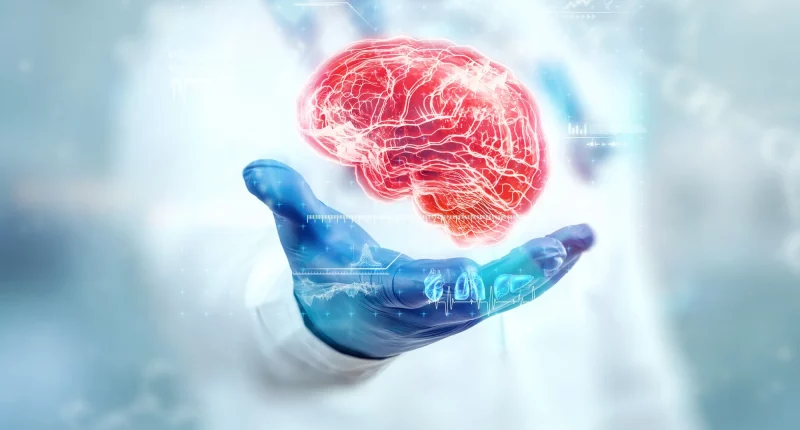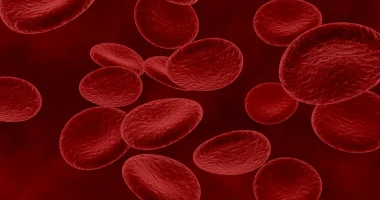Ataxia is when someone has trouble coordinating their muscles, which can make it hard to speak clearly, move their eyes, swallow, walk, or grab things. It can be caused by different health problems, genes you inherit from your family, or other reasons.
Lots of things can lead to ataxia, like multiple sclerosis (MS), getting a hit on the head, drinking too much alcohol, having a stroke, cerebral palsy, genes you get from your family, or having tumors.
Sometimes, ataxia can also happen because of certain problems with your immune system or if you get sick with certain infections.
Ataxia can start all of a sudden, get worse over time, or stay the same. How it goes depends on what’s causing it.
Types of Ataxia
Cerebellar Ataxia
Cerebellar ataxia is a common type of ataxia that happens when there’s a problem with the cerebellum, a part of the brain that helps with coordination and control of movement. It can lead to symptoms like body or limb shaking when trying to move, reduced muscle tone, difficulty coordinating body parts or movements, trouble judging distance, speed, or strength of movement, and difficulty with rapid, alternating movements. How severe these symptoms are and how they affect the body depends on where the part of the brain gets damaged and whether it affects the unilateral or bilateral sides of the brain.
For instance, damage to the vestibulocerebellum can affect eye movement control and balance, causing a person to widen their stance for better balance and prevent swaying. Damage to the spinocerebellum can result in an abnormal walking pattern with uneven steps and stuttering movements because this part of the brain regulates limb and body movements. When the cerebrocerebellum is affected, voluntary movements may become shaky, with trembling of the head, limbs, eyes, and torso, and speech may become slurred with changes in rhythm and volume.
Sensory Ataxia
Sensory ataxia develops due to a lack of proprioception, which is the body’s sense of the relative condition of neighboring body parts and whether they are moving appropriately. This type of ataxia often leads to an unsteady, stumbling gait with heavy heel strikes, especially in poorly lit environments where postural instability worsens. When standing with feet together and eyes closed, instability increases due to the lack of proprioception, which makes individuals rely more on visual cues. Gently coordinated voluntary movements may also become challenging for them.
Vestibular Ataxia
Vestibular ataxia affects the vestibular system, which is involved in hearing and balance. It can occur due to damage to the nerve in the ear. In cases of sudden unilateral vestibular ataxia, symptoms like nausea, vertigo, and vomiting may occur. Chronic bilateral vestibular ataxia, which develops slowly over time, may cause only unsteadiness without the acute symptoms. Sometimes, there can be a mix of causes, such as vestibulocerebellar ataxia, involving both the vestibular system and the cerebellum.
Symptoms of Ataxia
The symptoms of ataxia can vary widely depending on the form and seriousness of the condition, as well as the age at which it first appears. When ataxia is caused by genetic factors, it may be ocuurs from birth. However, if it is the result of an injury or another health situation symptoms can develop at any age.
Initially, symptoms often include difficulty coordinating movements of the limbs and problems with speech, such as slurred or slow speech, difficulty in producing speech, and challenges in controlling volume, pitch, and rhythm. Over time, additional symptoms may arise, including trouble swallowing leading to coughing or choking, tremors or shaking in the area of the body, nystagmus (involuntary eye movements), balance issues, difficulties walking potentially requiring wheelchair use, as well as hearing and vision problems. The emotional toll can also be significant, often leading to feelings of depression because of the challenges of existing with the condition.
In childhood, ataxia telangiectasia may manifest with symptoms beyond just motor difficulties, including the appearance of spider veins in various parts of the body and a tendency to develop frequent infections. Another genetic form, Friedreich’s ataxia, typically emerges between the ages of 10-15 years. Symptoms of Friedreich’s ataxia include a curvature of the spine (scoliosis), weakened heart muscle, and high-arched feet. Individuals with this condition may also develop diabetes and other heart consequences, requiring ongoing supportive treatment throughout their lives.
For cases where ataxia is caused by an illness or injury like a stroke, signs frequently increase over time and may eventually resolve completely.
Treatment for Ataxia
While there’s usually no outright cure for ataxia, treatments are available to manage symptoms and enhance quality of life. Depending on the specific symptoms experienced, healthcare providers may recommend various treatment options.
Balance and coordination issues
For balance and coordination issues, adaptive devices like crutches, walking sticks, wheelchairs, and walkers can aid in maintaining independence. Home modifications might also be suggested to facilitate wheelchair access and overall mobility.
Tremors, muscle spasms, stiffness, and weakness
To address symptoms like tremors, muscle spasms, stiffness, and weakness, doctors may recommend medicines and recommend physical or occupational therapy. These interventions aim to enhance strength, mobility, and the development of alternative methods for performing daily tasks.
Curvature of the spine
In cases of spinal curvature, orthopedic care may be recommended to manage the condition effectively.
Depression
Mental health concerns, such as depression, can be addressed through medication and counseling as needed.
Speech problems
Speech problems associated with ataxia can be mitigated with the help of a speech therapist. They can offer assistance with communication challenges and provide exercises to improve muscle control, particularly for swallowing, coughing, or choking. Additionally, speech therapists can guide individuals in utilizing speech aids if necessary.
Deficiencies
For individuals with deficiencies, such as certain vitamin deficiencies or gluten sensitivity, treatment may involve taking supplements, following a specialized diet, or both.
Immune problems
In instances where immune problems are a factor, such as in ataxia telangiectasia, treatment may use gamma-globulin injections to bolster the immune system.
Uncontrollable eye movements
Medication may be prescribed to manage uncontrollable eye movements, providing relief and improving overall comfort.
Causes of Ataxia
Ataxia can arise from various factors:
Ataxia may develop due to an inherited genetic defect passed down from parents to their child. In some cases, the severity of symptoms can worsen across generations, with the age of onset occurring at a younger age.
Certain health conditions, like stroke, multiple sclerosis (MS), or vitamin B-12 deficiency, can lead to nerve damage, resulting in ataxia. Immunological problems can also contribute to its development.
Inherited Ataxia
Inherited ataxia stems from genetic factors passed down within families. The severity and age of onset can vary, and counseling and genetic testing may be recommended for individuals with an inherited kind of ataxia who are considering having kids. The likelihood of inheriting the faulty gene depends on the specific type of ataxia.
For instance, Friedreich’s ataxia requires both parents to carry the genetic defect to pass it on, while spinocerebellar ataxia only necessitates one parent to carry the defective gene, with each offspring having a 50% chance of developing the condition.
Acquired Ataxia
Acquired ataxia can result from various conditions and events, including brain tumors, brain surgery, head injuries, excessive alcohol or drug consumption, certain infections like chickenpox, contact with toxic chemicals, and neurological conditions such as MS, cerebral palsy, or stroke.
Additionally, some tumors, particularly ovarian tumors, can cause ataxia through paraneoplastic syndrome. These tumors produce chemicals that damage the cerebellum, with ataxia being the primary symptom.
Diagnosis of Ataxia
When someone shows symptoms of ataxia, they’ll typically be referred to a neurologist, a specialist in nervous system disorders. The neurologist will conduct a thorough examination and review the individual’s medical history, looking for potential causes such as previous brain injuries, and examining family history for signs of inherited ataxia.
In addition to the clinical evaluation, the neurologist may order various diagnostic tests to further investigate the condition:
Imaging tests like CT or MRI scans are often conducted to identify any abnormalities in the brain, such as lesions, tumors, or other forms of damage.
Genetic testing may be recommended to assess for inherited forms of ataxia, particularly if there is a suspicion based on family history.
Blood tests can help in diagnosing certain types of ataxia that affect blood composition.
Urine tests may also be conducted, as they can reveal systemic changes associated with certain forms of ataxia. For instance, in Wilson’s disease, abnormal levels of copper may be detected in a 24-hour urine collection.
Ataxia without a known cause is referred to as idiopathic or sporadic idiopathic ataxia. Diagnosing this type of ataxia can be challenging and may require time as symptoms can overlap with those of other conditions, necessitating careful consideration and potentially further testing to confirm the diagnosis.
Summary
Ataxia, a condition affecting muscle coordination, can stem from genetic factors, health conditions like stroke or MS, or environmental factors like alcohol use. Diagnosis involves a neurological examination, medical history review, and various tests such as MRI, genetic tests, and blood and urine analyses. Inherited ataxia may require genetic counseling, while acquired ataxia can result from injuries, infections, or toxic exposures.
Treatment aims to manage symptoms through adaptive devices, medications, therapy, and lifestyle adjustments. Diagnosis can be complex, as symptoms may mimic other conditions, leading to the classification of sporadic or idiopathic ataxia when no clear cause is found. Overall, managing ataxia involves a multidisciplinary approach focused on enhancing quality of life.









